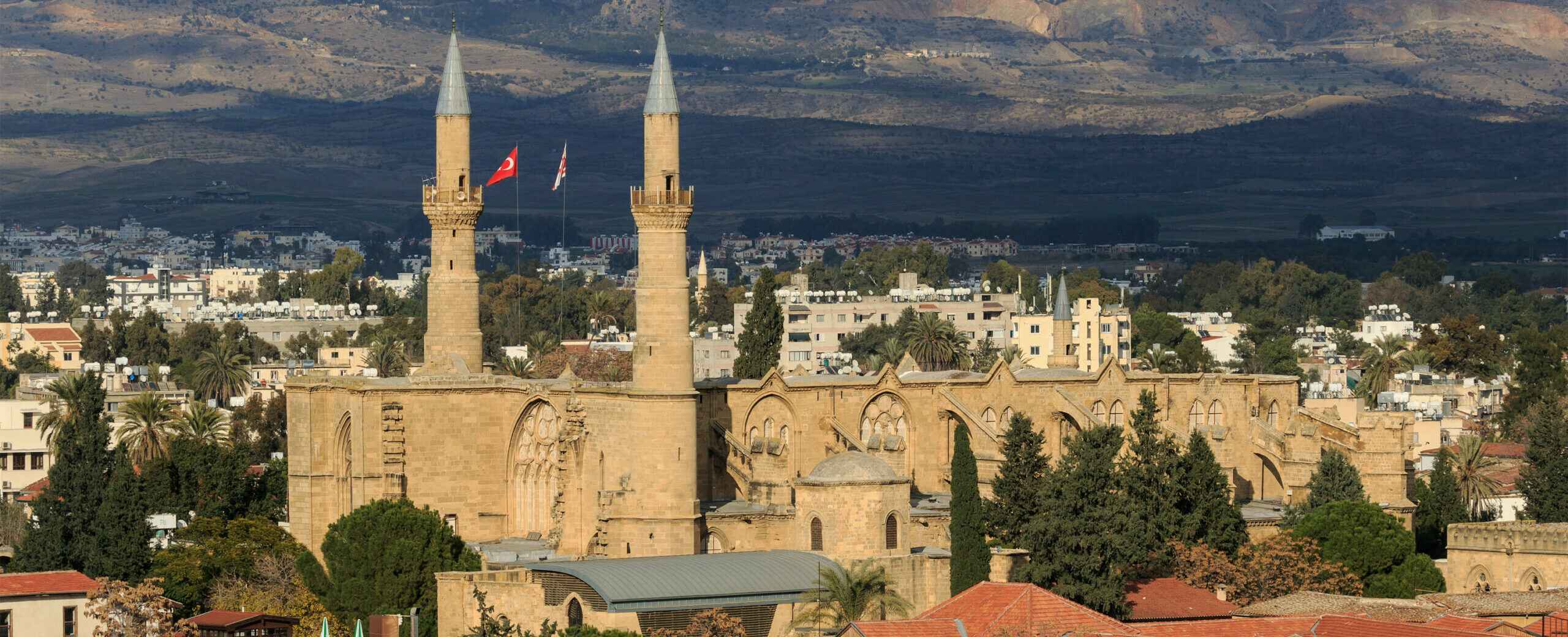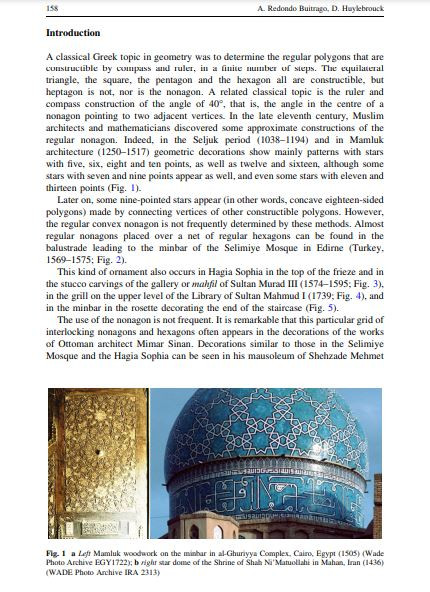

One of the classical topics in geometry is the ruler and compass construction of good approximations of the regular nonagon. We propose a method to choose a desired error of approximation, based on new linear third-order recurrence relations. It is related to patterns shown on the balustrade of minbar of Selimiye Mosque in Edirne (Turkey, 1569–1575), where apparently regular nonagons are placed over a net of regular hexagons. This kind of ornament also occurs in Hagia Sophia in the minbar, in freezes stucco carvings and in window grilles. In Medieval Islamic art and architecture the use of the nonagon is not frequent, but it is remarkable that this particular grid of interlocked nonagons and hexagons appears in the decorations of the works of Ottoman architect Mimar Sinan. The pattern is present in his masterpiece, the Selimiye Mosque, in the Hagia Sophia and in other works in the Istanbul city. Looking at practical ways for the construction of the pattern, we provide simple procedures to obtain angles close to 40° that could have been useful for a craftsman to realize the nonagonal geometric designs. In particular, almost regular nonagons are constructed using some elementary shapes that are related with semi-regular tessellations. We compare the patterns obtained through theoretical considerations to those displayed in the examples given above. Several hypotheses are proposed for the practical construction of the interlocked hexagonal patterns for nonagons.
Redondo Buitrago, Antonia, and Dirk Huylebrouck. “Nonagons in the Hagia Sophia and the Selimiye Mosque.” Nexus Network Journal 17 (2015): 157-181.
I agree to the terms outlined below:
You agree to upload and assign Mosqpedia Database the rights to use the content worldwide and in perpetuity across all current and future media platforms. Mosqpedia Database may edit, copy, adapt and translate your contribution.
The content will be distributed under the Creative Commons Attribution-Deed – Attribution-NonCommercial-NoDerivatives 4.0 International – Creative Commons
All data will be stored in line with data protection regulations.